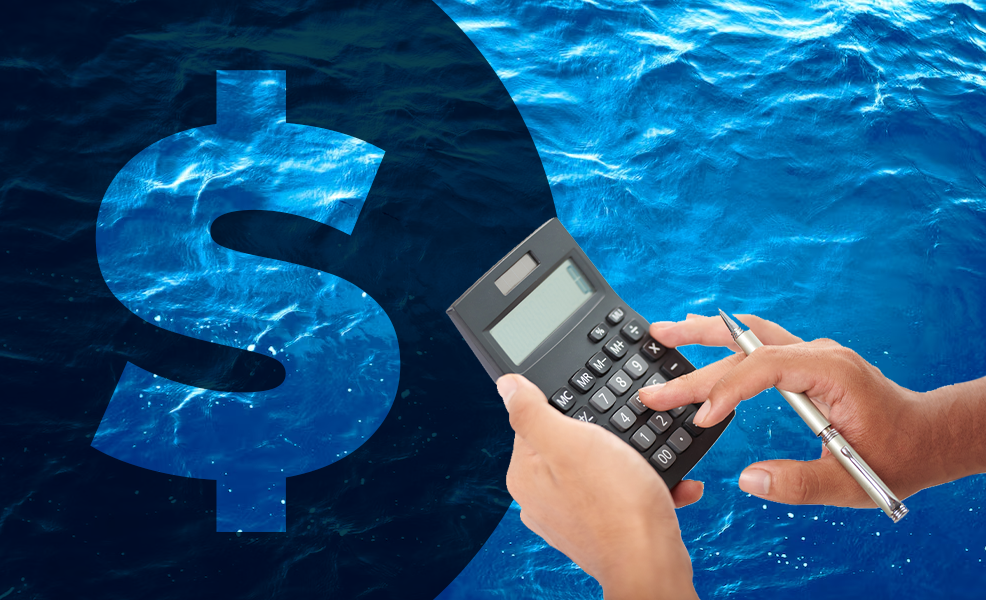One of the first questions we always get in talking to potential clients is “what is the ROI of implementing H2know?” At Conservation Labs, our mission is to enable cost-effective and sustainable water use. The first step in calculating the ROI of sustainable water use with H2know is identifying the economic impact of unwanted water use: the cost of leaks, inefficient water use, sewage, energy, and water damage. Using the below assumptions, we estimate the cost of unwanted water us in the United States is $62.64 billion a year. Note that this analysis uses the most conservative assumptions in its calculations. Some calculations put the cost of unwanted water use in the range of $90 billion a year.
Residential
| Unwanted Residential Water Use | ||
|---|---|---|
| Annual gallons lost to leaks | ||
|
11.0 | |
|
9.2% | |
| Subtotal annual gallons lost to leaks (in trillions) | 1.01 | |
| Annual gallons lost to inefficient water use (in trillions) | ||
|
11.0 | |
|
8.4% | |
| Subtotal Annual gallons lost to inefficiency (in trillions) | 0.92 | |
| Total annual residential gallons unwanted water use (in trillions) | 1.94 |
| Cost of Residential Unwanted Water Use | ||
|---|---|---|
| Cost of Water | ||
|
$3.38 | |
|
1.01 | |
|
0.92 | |
| Subtotal Cost of Water (in billions) | $6.54 | |
| Cost of Sewage of Unwanted Water | ||
|
$4.26 | |
|
1.94 | |
| Subtotal Cost of Sewage (in billions) | $8.25 | |
| Cost of Energy to Heat Unwanted Water | ||
|
$25.0 | |
|
17.6% | |
| Subtotal Cost of Energy to Heat Unwanted Water (in billions) | $4.40 | |
| Subtotal Cost of Damage (Annual insurance payouts for water damage in billions)12The total amount of insurance payouts for water damage for homes is $13 billion, assuming $17,000 average damage (https://www.insurancebusinessmag.com/us/news/breaking-news/study-water-damage-claims-surging-161741.aspx) | $13.00 | |
| Total annual cost of residential unwanted water use (in billions) | $32.19 |
Commercial
| Unwanted Commercial Water Use | ||
|---|---|---|
| Annual gallons lost to leaks | ||
|
17.2 | |
|
9.4% | |
| Subtotal annual gallons lost to leaks (in trillions) | 1.62 | |
| Annual gallons lost to inefficient water use (in trillions) | ||
|
17.2 | |
|
10.2% | |
| Subtotal Annual gallons lost to inefficiency (in trillions) | 1.75 | |
| Total annual gallons unwanted commercial water use (in trillions) | 3.37 |
| Cost of Unwanted Commercial Water Use | ||
|---|---|---|
| Cost of Water | ||
|
$2.99 | |
|
1.62 | |
|
1.75 | |
| Subtotal Cost of Water (in billions) | $10.08 | |
| Cost of Sewage of Unwanted Water | ||
|
$3.83 | |
|
3.37 | |
| Subtotal Cost of Sewage (in billions) | $12.90 | |
| Cost of Energy to Heat Unwanted Water | ||
|
$27.9 | |
|
19.6% | |
| Subtotal Cost of Energy to Heat Unwanted Water (in billions) | $5.47 | |
| Subtotal Cost of Damage (Annual insurance payouts for water damage in billions)24See footnote 12; assumes 2% of properties are commercial | $2.00 | |
| Total annual cost of unwanted commercial water use (in billions) | $30.46 |
- 1
- 2Calculated from stats of total household water use and annual leak stats from https://www.epa.gov/watersense/statistics-and-facts and https://www.epa.gov/watersense/fix-leak-week
- 3See footnote 1
- 4There are a number of studies and approaches to increase efficiency of water use. A WaterSense labeled home can save 50,000 gallons of water a year (https://www.epa.gov/watersense/homes), which is about 39% of average total use. A simple behavioral change such as reducing the length of a shower by 10% and the number of showers per week by 10% can save 3.2% of household water use. (https://www.home-water-works.org/indoor-use/showers; https://www.theatlantic.com/health/archive/2015/02/how-often-people-in-various-countries-shower/385470/) There are a number of studies that suggest that metering properties and creating usage awareness reduces water use from 15-30%. (https://www.allianceforwaterefficiency.org/resources/metering; https://academic.oup.com/oep/article/73/1/399/5620404)
- 5To quantify the economic impact, a number of rate studies were examined. If conflicting rates were identified, the conservative estimate was made
- 6See “Subtotal annual gallons lost to leaks (in trillions)” in above table
- 7See “Subtotal annual gallons lost to inefficiency (in trillions)” in table above
- 8To quantify the economic impact, a number of rate studies were examined. If conflicting rates were identified, the conservative estimate was made
- 9See “Total annual residential gallons unwanted water use (in trillions)” in table above
- 10Assumes $115 average household electric bill, 15% attributed to heating water, 4.5 billion households
- 11In an average home, heating water accounts for 15% of the total household energy use. According to the 2016 Residential End Uses of Water Study (https://www.circleofblue.org/wp-content/uploads/2016/04/WRF_REU2016.pdf), hot water makes up about 33 percent of all indoor water use
- 12The total amount of insurance payouts for water damage for homes is $13 billion, assuming $17,000 average damage (https://www.insurancebusinessmag.com/us/news/breaking-news/study-water-damage-claims-surging-161741.aspx)
- 13
- 14Residential ratio used for commercial, see footnote 2
- 15See footnote 13
- 16See footnote 4
- 17See footnote 5
- 18See “Subtotal annual gallons lost to leaks (in trillions)” in above table
- 19See “Subtotal annual gallons lost to inefficiency (in trillions)” in table above
- 20See footnote 5
- 21See “Total annual commercial gallons unwanted water use (in trillions)” in table above
- 22Assumes office building owners spend an average of $2.14 on energy consumption per square foot in commercial buildings
- 23See footnote 11
- 24See footnote 12; assumes 2% of properties are commercial

